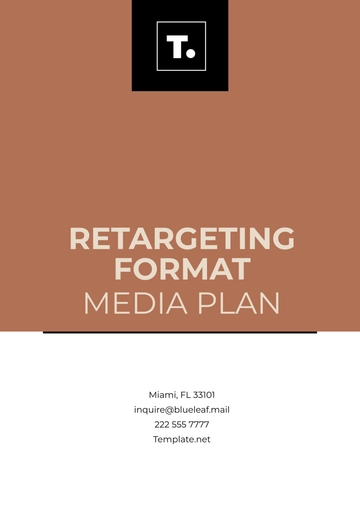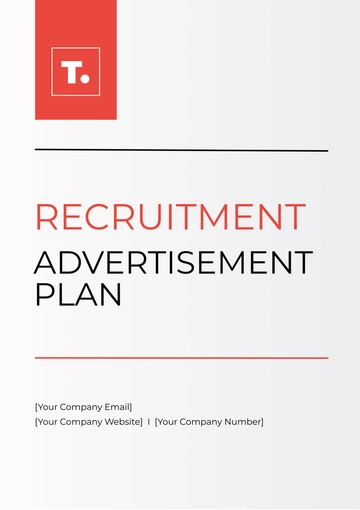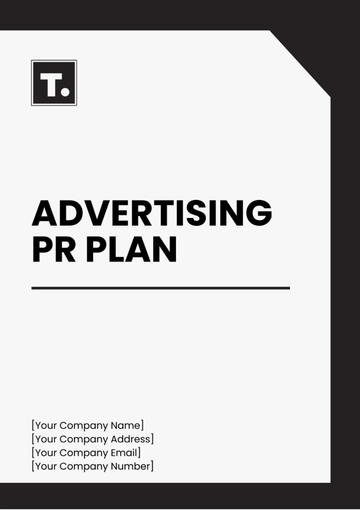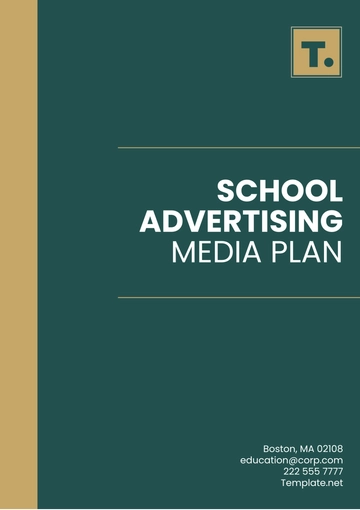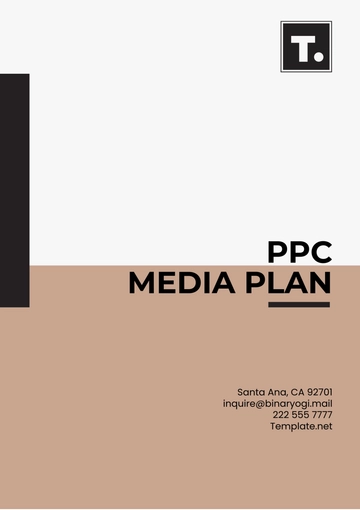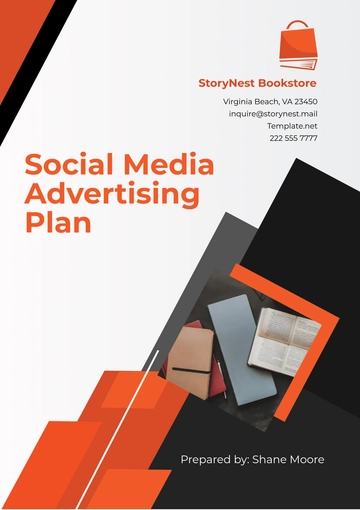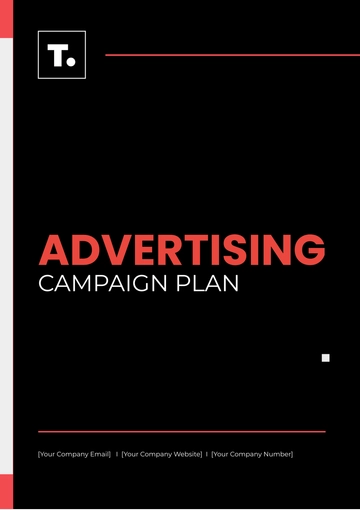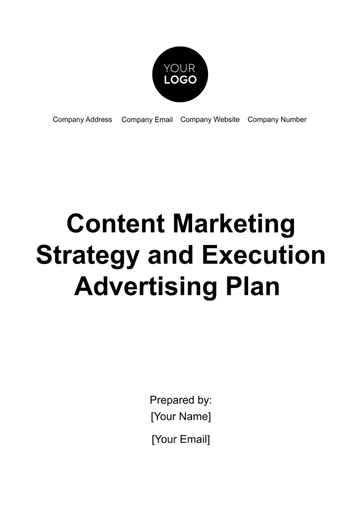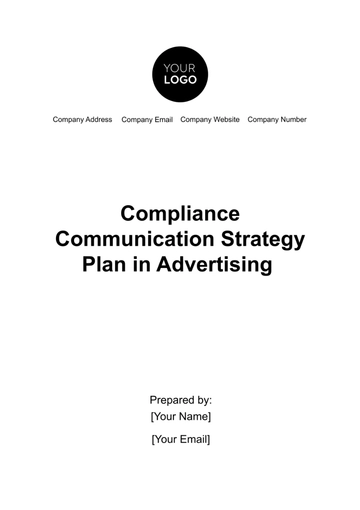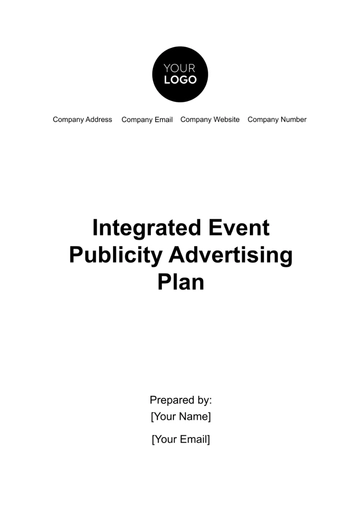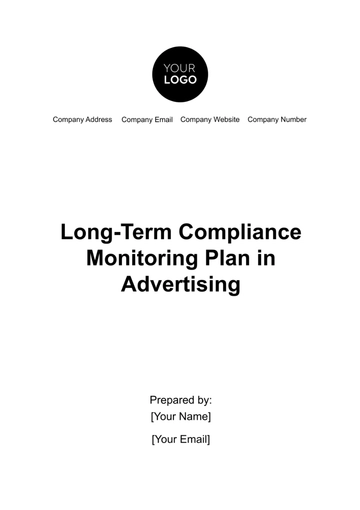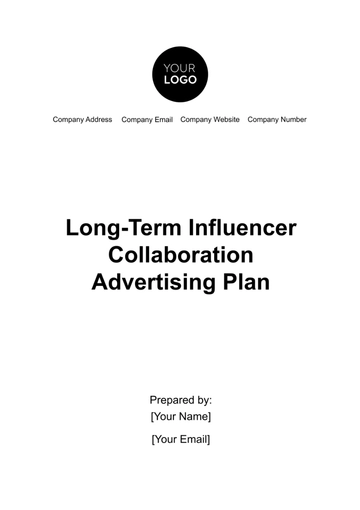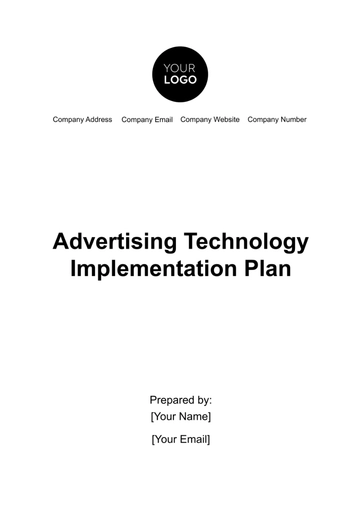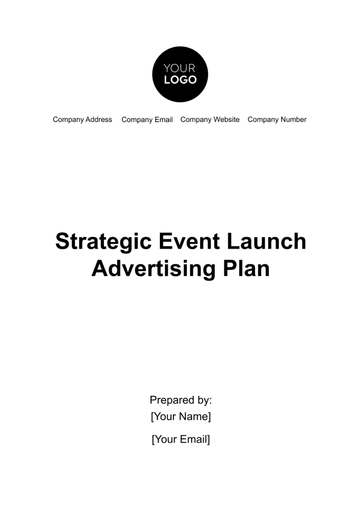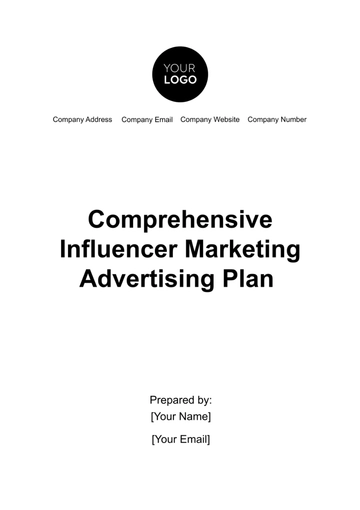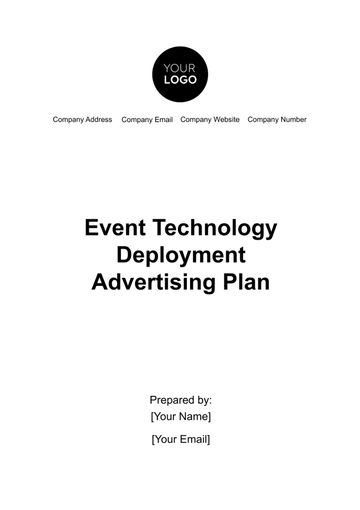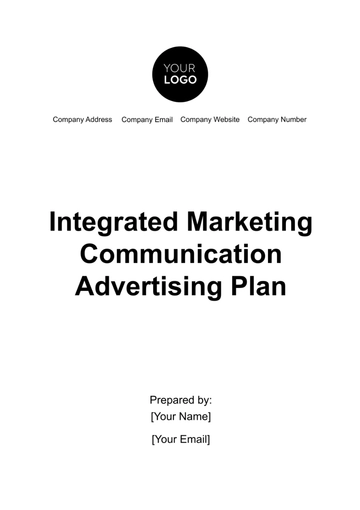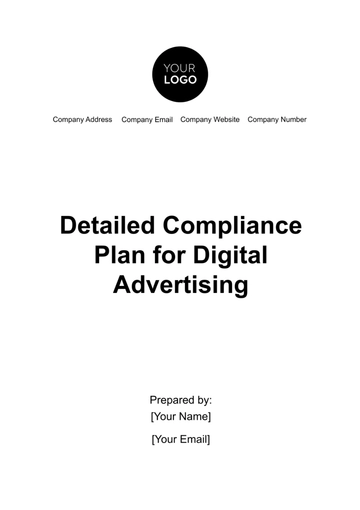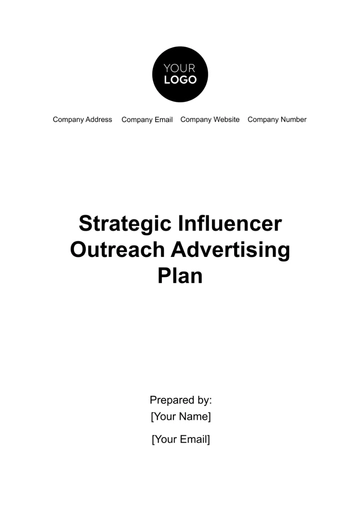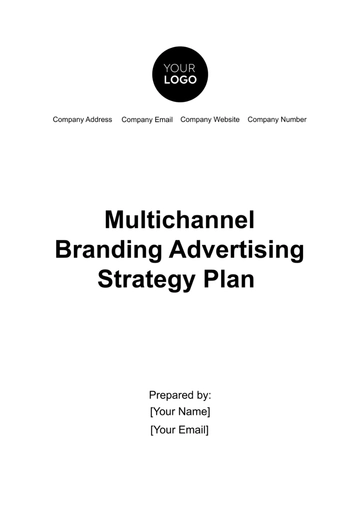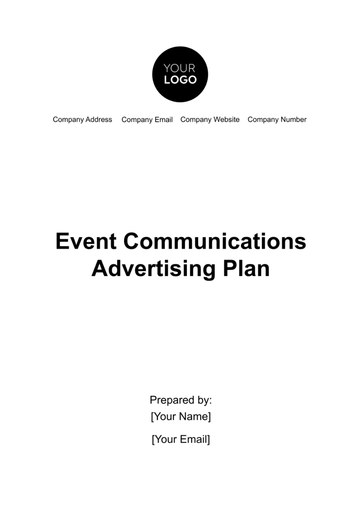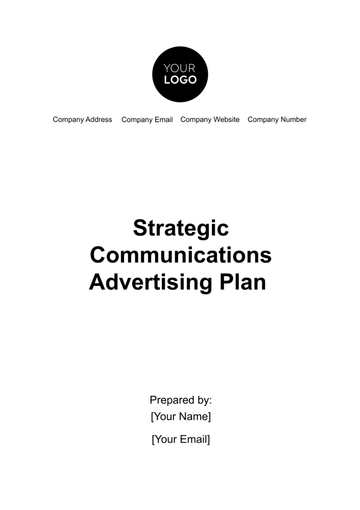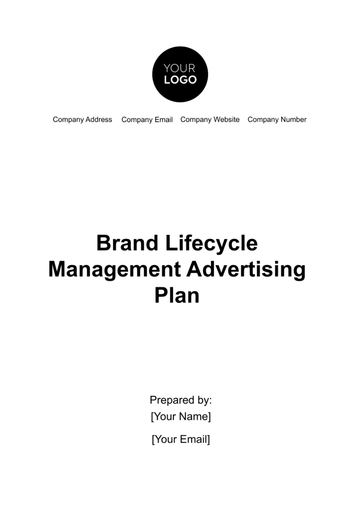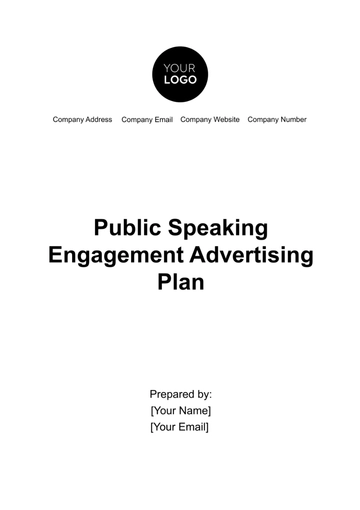Free Advertising National Media Coverage Plan
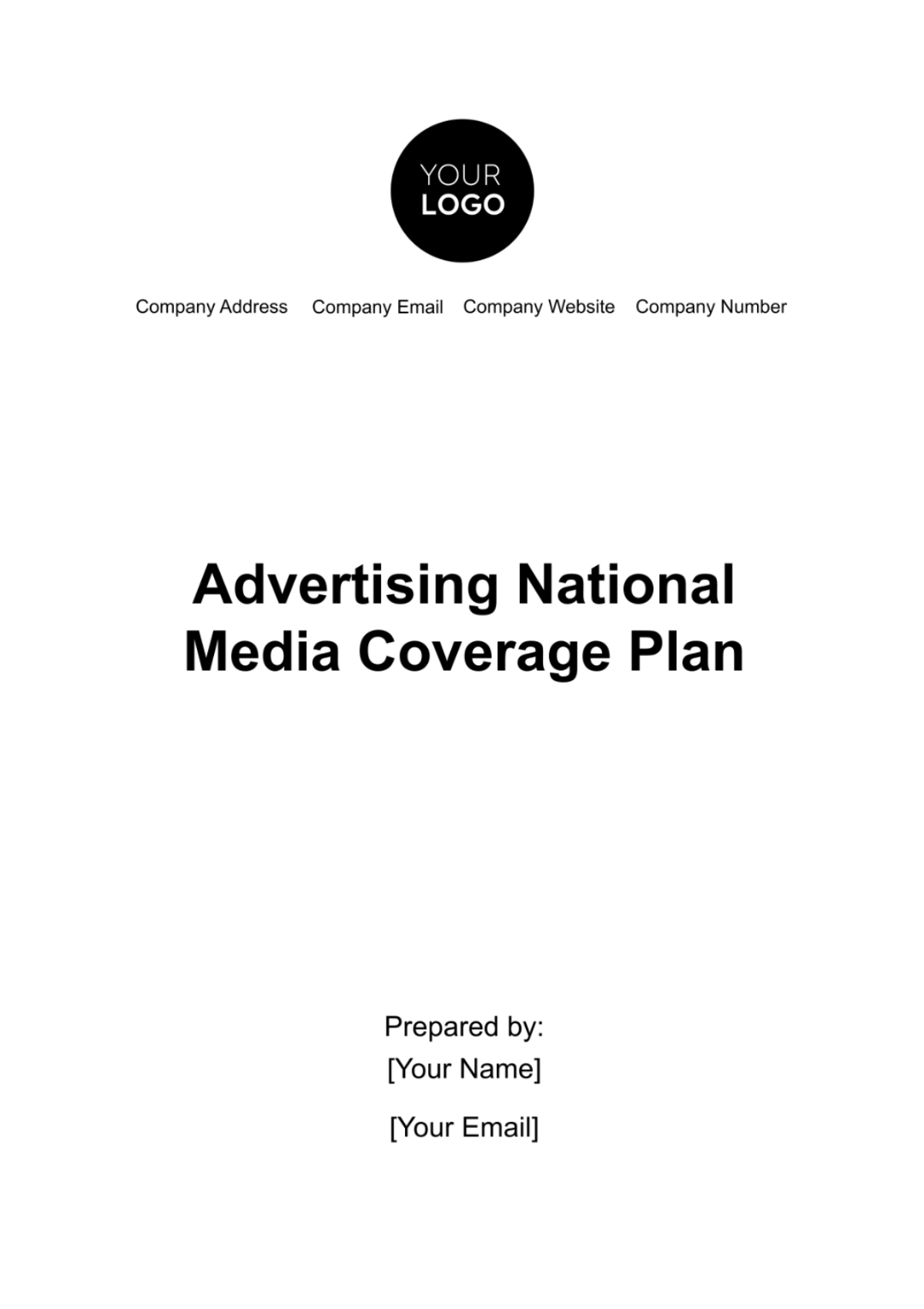
I. Executive Summary
This Advertising National Media Coverage Plan covers a strategic blueprint for an extensive nationwide campaign. The primary objectives encompass a [25% increase] in brand awareness, a [20% increase] in social media engagement, and a commendable [15% increase] in sales within the upcoming fiscal quarter. This plan offers an overview of its strategic elements poised to propel the brand to new heights through a dynamic and impactful nationwide advertising initiative.
II. Objectives and Goals
The objectives of this advertising campaign are strategically aligned to encapsulate brand-centric and market-driven goals. The campaign endeavors to:
Elevate Brand Awareness
a. Increase brand recognition by [25%] within the forthcoming fiscal quarter.
b. Establish a distinct and memorable presence in the collective consciousness of the target demographic.
Facilitate Engaging Interactions
a. Foster a [20%] surge in social media interactions through captivating and interactive campaign elements.
b. Cultivate a dynamic and participatory brand community that resonates with the ethos of innovation and sustainability.
Drive Tangible Sales Growth
a. Propel a noteworthy [15%] surge in sales for the featured product line.
b. Translate heightened awareness and engagement into tangible and sustainable revenue streams.
III. Target Audience Analysis
In-depth analysis of the target audience gives a nuanced understanding of their demographics, psychographics, and behavioral intricacies. The campaign's effectiveness hinges upon a meticulous comprehension of the following facets:
Demographics
Demographic | Insights |
Age | Primarily individuals aged 25-45, representing urban professionals. |
Gender | Balanced representation with a focus on inclusivity. |
Income Level | Middle to upper-middle income brackets. |
Location | Urban and suburban areas with a tech-centric lifestyle. |
Psychographics
Understanding the target audience's values, interests, and lifestyle choices is paramount for crafting resonant messaging.
Values
a. Emphasis on sustainability, innovation, and conscious consumption.
b. Desire for products that align with eco-friendly principles.
Interests
a. Technology enthusiasts seeking cutting-edge solutions.
b. Engagement in activities promoting environmental awareness.
Lifestyle
a. Busy professionals with a penchant for work-life balance.
b. A proclivity for staying abreast of technological advancements.
Behavioral Patterns
An examination of how the target audience interacts with media and makes purchasing decisions is vital for precise campaign targeting.
Media Consumption
a. Predominant reliance on digital platforms for information and entertainment.
b. Moderate engagement with television and radio during prime hours.
Purchasing Behavior
a. Inclination towards brands emphasizing sustainability and technological innovation.
b. Demonstrated responsiveness to interactive and socially conscious marketing.
This multifaceted understanding of the target audience serves as the bedrock for channel selection, messaging strategy, and campaign optimization. The format provides a visually accessible overview, ensuring that all stakeholders can readily grasp the intricacies of our audience segmentation.
IV. Media Channel Selection
In the discerning process of media channel selection, each platform has been strategically chosen to resonate with the nuances of our target audience. The synergy between our brand message and the unique attributes of each channel ensures a multi-faceted approach, maximizing the impact of our campaign. The rationale behind the selection of each channel is as follows:
Television: Television serves as an expansive canvas for storytelling, enabling us to encapsulate our brand narrative with emotive resonance. The visual nature of television aligns seamlessly with our goal of creating a lasting impression on a broad spectrum of viewers.
Digital Platforms: Our digital presence is curated to engage with the tech-savvy demographic prevalent in our target audience. Leveraging the interactive and targeted capabilities of digital platforms, we aim to establish a meaningful and sustained connection with our audience in the online sphere.
Print: Publications in the print realm cater to a discerning audience passionate about sustainability. Placing our content in these magazines ensures exposure to a community that values innovative and eco-conscious products, thereby enhancing the resonance of our message.
Radio: Radio provides a strategic avenue to reach professionals during their daily commutes. This channel enables us to infuse our brand voice directly into the auditory landscape of our target audience, fostering familiarity and recognition.
The judicious selection of these media channels not only diversifies our outreach but also ensures a cohesive and harmonious narrative across platforms.
V. Budget Allocation
The allocation of resources has been meticulously structured to ensure an optimized and strategic distribution of the advertising budget across various media channels. This judicious allocation aligns with the campaign's overarching objectives, maximizing the impact of promotional efforts. The budget breakdown is as follows:
Media Channel Allocation
Media Channel | Budget Allocation | Percentage of Total Budget |
Television | $500,000 | 50% |
Digital Platforms | ||
Radio |
Justification
Television: Television remains a pivotal channel for captivating visual storytelling, providing a broad reach and fostering a lasting brand impression.
Digital Platforms: A substantial portion is allocated to digital platforms to tap into the tech-savvy target demographic, leveraging the power of online presence and interactivity.
Print: Niche print publications offer a targeted approach, reaching sustainability enthusiasts and providing a tangible platform for in-depth engagement.
Radio: Radio, as an auditory medium, caters to the commuting audience, ensuring a strategic presence during key moments of daily life.
Flexibility and Optimization:
This budget allocation strategy allows for flexibility, enabling dynamic adjustments based on real-time performance analytics. The percentages reflect a balanced approach, ensuring each channel receives an appropriate share of resources, contributing synergistically to the overall campaign success.
VI. Media Buying Strategy
The Media Buying Strategy focuses on securing optimal ad placements and maximizing cost-effectiveness. Leveraging negotiated rates and bulk buying discounts, the campaign will strategically reserve ad space to coincide with peak audience engagement times. The goal is to ensure a prominent and impactful presence across all chosen media channels, thereby optimizing the return on investment. The detailed implementation of this strategy is outlined in the accompanying budget allocation section.
VII. Campaign Scheduling
The Campaign Scheduling segment intricately outlines the temporal intricacies of our advertising endeavors. A well-coordinated timeline has been devised to maximize audience exposure and engagement across diverse media channels. The following table delineates the detailed scheduling for each media channel:
Media Channel | Start Date | End Date | Peak Time Slots |
Television | [MM-DD-YYYY] | [MM-DD-YYYY] | [0:00 AM/PM - 0:00 AM/PM] |
Digital Platforms | |||
Radio |
This schedule ensures a strategic and synchronized approach, allowing the campaign to unfold seamlessly across various channels. The designated start and end dates align with our campaign objectives, enabling us to capitalize on prime advertising opportunities and maximize audience reach during optimal time slots.
VIII. Creative and Messaging Strategy
The Creative and Messaging Strategy revolves around cultivating a compelling narrative that seamlessly integrates innovation, sustainability, and lifestyle enhancement. The overarching theme is designed to captivate the target audience and evoke a sense of connection with the brand.
Consistency in messaging across all chosen channels ensures a harmonized brand identity, emphasizing the unique value proposition of the featured product line. Through visually engaging and emotionally resonant content, the campaign aims to establish a lasting impression, fostering brand loyalty and prompting positive consumer action.
IX. Performance Metrics and Evaluation
In order to gauge the effectiveness of the Advertising National Media Coverage Plan, a robust set of performance metrics and evaluation criteria have been meticulously defined. These metrics serve as quantitative benchmarks, enabling a comprehensive analysis of the campaign's impact and the attainment of predetermined objectives.
Key Performance Indicators (KPIs):
Reach: The total number of unique individuals exposed to the campaign.
Regular monitoring through media analytics tools.
Achieve a minimum reach of [10 million] within the campaign duration.
Frequency: The average number of times an individual is exposed to the campaign content.
Calculated through media tracking tools and surveys.
Maintain a frequency range of [3-5 exposures] per individual.
Conversion Rates: The percentage of individuals who take a desired action, such as making a purchase or engaging with promotional content.
Analyzing sales data, website analytics, and social media interactions.
Achieve a conversion rate increase of [15%] compared to the pre-campaign baseline.
Return On Investment (ROI): The ratio of net campaign profits to the overall campaign investment.
Thorough analysis of sales data, cost per acquisition, and other financial metrics.
Attain a minimum ROI of [20%], demonstrating the campaign's financial effectiveness.
Monitoring and Evaluation Process
Real-time Analytics: Continuous monitoring of real-time analytics tools will provide instant insights into the campaign's performance across various media channels. This allows for agile adjustments to optimize ongoing activities.
Periodic Review Meetings: Scheduled bi-weekly review meetings will facilitate a comprehensive analysis of the campaign's progress. Key stakeholders will collaboratively assess the alignment of actual outcomes with predefined KPIs and strategize accordingly.
Post-Campaign Audit: Upon the conclusion of the campaign, a detailed post-campaign audit will be conducted. This audit will involve a thorough examination of the collected data, a comparison of actual outcomes against predicted results, and the identification of lessons learned for future campaigns.
The delineated performance metrics and evaluation process are integral components of our strategic approach. This commitment to robust evaluation methodologies underscores our dedication to delivering tangible and measurable results.
X. Contingency Plans
This plan incorporates a robust Contingency Plans section to proactively address potential challenges and ensure the resilience of the campaign. The contingency strategies outlined below are devised to mitigate risks, allowing for agile responses to unforeseen circumstances.
Media Disruptions: In the event of unforeseen disruptions in selected media channels, a rapid response protocol will be activated. This includes reallocation of budget to alternative channels with a comparable reach and audience alignment. Regular communication with media partners will be maintained to promptly address any emerging issues and seek alternative solutions.
Competitive Challenges: To counter potential challenges posed by competitors, continuous monitoring of competitor activities will be implemented. Swift adjustments to the campaign strategy, such as introducing exclusive promotions or adjusting messaging to highlight unique selling points, will be undertaken to maintain a competitive edge.
Market Conditions: Given the dynamic nature of market conditions, a flexible approach will be adopted. Regular market analyses will be conducted to identify shifts in consumer behavior or economic factors. If necessary, the campaign strategy will be adjusted to align with emerging trends, ensuring relevance and resonance with the target audience.
Force Majeure Events: In the face of unforeseen events such as natural disasters or global crises, a comprehensive contingency plan will be activated. This includes swift communication with stakeholders, reassessment of campaign timelines, and, if required, the initiation of crisis-specific messaging to maintain brand integrity.
Technological Failures: Acknowledging the reliance on digital platforms, a contingency plan for technological failures is in place. Regular system checks and communication with tech support will ensure the seamless functioning of digital components. Alternative communication channels will be activated promptly if technical issues arise.
Legal and Compliance Challenges: To address potential legal and compliance challenges, a dedicated legal review process will be maintained throughout the campaign. Any changes in regulations will be promptly incorporated into the campaign strategy, and legal counsel will be consulted to ensure ongoing compliance.
XI. Conclusion
[Your Company Name]'s comprehensive national media coverage plan is designed to deliver impactful advertising, penetrate diverse market segments, and achieve measurable business growth. Our approach combines traditional and digital media platforms to create a holistic and dynamic advertising strategy.
- 100% Customizable, free editor
- Access 1 Million+ Templates, photo’s & graphics
- Download or share as a template
- Click and replace photos, graphics, text, backgrounds
- Resize, crop, AI write & more
- Access advanced editor
Unlock the potential of your marketing campaign with Template.net's Advertising National Media Coverage Plan Template. This editable and customizable document is designed to streamline your media planning process, saving you time and effort. Specifically editable in our Ai Editor Tool, it allows you to effortlessly tailor your strategy for maximum media impact. Engage, impress and inspire with our sophisticated, professionally designed template.
You may also like
- Finance Plan
- Construction Plan
- Sales Plan
- Development Plan
- Career Plan
- Budget Plan
- HR Plan
- Education Plan
- Transition Plan
- Work Plan
- Training Plan
- Communication Plan
- Operation Plan
- Health And Safety Plan
- Strategy Plan
- Professional Development Plan
- Advertising Plan
- Risk Management Plan
- Restaurant Plan
- School Plan
- Nursing Home Patient Care Plan
- Nursing Care Plan
- Plan Event
- Startup Plan
- Social Media Plan
- Staffing Plan
- Annual Plan
- Content Plan
- Payment Plan
- Implementation Plan
- Hotel Plan
- Workout Plan
- Accounting Plan
- Campaign Plan
- Essay Plan
- 30 60 90 Day Plan
- Research Plan
- Recruitment Plan
- 90 Day Plan
- Quarterly Plan
- Emergency Plan
- 5 Year Plan
- Gym Plan
- Personal Plan
- IT and Software Plan
- Treatment Plan
- Real Estate Plan
- Law Firm Plan
- Healthcare Plan
- Improvement Plan
- Media Plan
- 5 Year Business Plan
- Learning Plan
- Marketing Campaign Plan
- Travel Agency Plan
- Cleaning Services Plan
- Interior Design Plan
- Performance Plan
- PR Plan
- Birth Plan
- Life Plan
- SEO Plan
- Disaster Recovery Plan
- Continuity Plan
- Launch Plan
- Legal Plan
- Behavior Plan
- Performance Improvement Plan
- Salon Plan
- Security Plan
- Security Management Plan
- Employee Development Plan
- Quality Plan
- Service Improvement Plan
- Growth Plan
- Incident Response Plan
- Basketball Plan
- Emergency Action Plan
- Product Launch Plan
- Spa Plan
- Employee Training Plan
- Data Analysis Plan
- Employee Action Plan
- Territory Plan
- Audit Plan
- Classroom Plan
- Activity Plan
- Parenting Plan
- Care Plan
- Project Execution Plan
- Exercise Plan
- Internship Plan
- Software Development Plan
- Continuous Improvement Plan
- Leave Plan
- 90 Day Sales Plan
- Advertising Agency Plan
- Employee Transition Plan
- Smart Action Plan
- Workplace Safety Plan
- Behavior Change Plan
- Contingency Plan
- Continuity of Operations Plan
- Health Plan
- Quality Control Plan
- Self Plan
- Sports Development Plan
- Change Management Plan
- Ecommerce Plan
- Personal Financial Plan
- Process Improvement Plan
- 30-60-90 Day Sales Plan
- Crisis Management Plan
- Engagement Plan
- Execution Plan
- Pandemic Plan
- Quality Assurance Plan
- Service Continuity Plan
- Agile Project Plan
- Fundraising Plan
- Job Transition Plan
- Asset Maintenance Plan
- Maintenance Plan
- Software Test Plan
- Staff Training and Development Plan
- 3 Year Plan
- Brand Activation Plan
- Release Plan
- Resource Plan
- Risk Mitigation Plan
- Teacher Plan
- 30 60 90 Day Plan for New Manager
- Food Safety Plan
- Food Truck Plan
- Hiring Plan
- Quality Management Plan
- Wellness Plan
- Behavior Intervention Plan
- Bonus Plan
- Investment Plan
- Maternity Leave Plan
- Pandemic Response Plan
- Succession Planning
- Coaching Plan
- Configuration Management Plan
- Remote Work Plan
- Self Care Plan
- Teaching Plan
- 100-Day Plan
- HACCP Plan
- Student Plan
- Sustainability Plan
- 30 60 90 Day Plan for Interview
- Access Plan
- Site Specific Safety Plan

